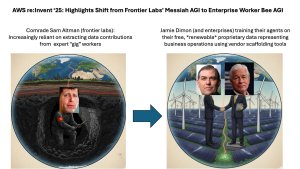Ericsson’s move to collaborate with telcos by creating a global platform for network APIs was some of the big news out of Ericsson’s Analyst Day event held in Boston last week. Providing developers with easy access to 5G network capabilities, opening up networks, and helping drive digitalization are all designed to help telecom industry players drive new revenue streams while better serving their customers.
Why Network APIs?
The rise of wireless networks, particularly 4G, played a significant role in shaping today’s app economy. Platforms like Uber, Apple, and various mobile-first applications owe their existence to the connectivity and speed that 4G wireless networks provide. With the advent of 5G, these networks are once again at the forefront of digital transformation, however the path to monetization for CSPs remains a challenge. One of the most significant ways this will happen is through the introduction of network application programming interfaces (APIs), which will enable developers to leverage advanced network capabilities in ways never before possible.
Wireless Networks as Critical Infrastructure
It’s impossible to overstate the importance of wireless networks today. While we might not spend much time thinking about this, wireless networks power just about everything we do, from both a business and a personal standpoint, today. Wireless printers, connected cars, smart homes and offices, and our ubiquitous mobile devices — wireless networks power our lives, and this connectivity is essential. For example, the defense and first responder sectors have already adopted wireless technology as a communication standard, and it’s used to power body cameras, in-vehicle comms systems, and even license plate readers. These critical comms also often include video, which needs higher performance and lower latency.
However, as we mentioned earlier, many telco operators are struggling to monetize their networks effectively. This challenge is not due to a lack of value in the networks themselves but rather a disconnect between the capabilities of these networks and their accessibility to developers. And as we know, empowering the developer community is what fuels innovation, which has been a key area of focus for Ericsson.
The Developer Dilemma
The “developer dilemma” has been a significant challenge for the telecom industry, which has long remained inaccessible for developers, for a variety of reasons. The complexity of wireless networks, coupled with a reluctance on the part of telcos to open their infrastructure has made it nearly impossible for developers to create applications that directly interact with network capabilities. While developers have made significant advances using APIs for storage and compute services, wireless connectivity has remained largely out of reach. As a result, today, applications focus primarily on cloud-based services rather than taking full advantage of the network’s potential. But Ericsson endeavors to change that.
Ericsson’s Joint Venture with Major Global Telcos is Designed to Expand Digitization and Drive Operator Revenue Streams
Ericsson and some of the world’s largest telecom operators are coming together to combine forces and bring common network APIs together. The telco operators include América Móvil, AT&T, Bharti Airtel, Deutsche Telekom, Orange, Reliance Jio, Singtel, Telefonica, Telstra, T-Mobile, Verizon, and Vodafone.
Together, they have created a newly formed venture aimed at changing the trajectory of the industry by making network capabilities accessible to developers through open, standardized APIs. This network APIs initiative is designed to break down the barriers that have kept developers from fully utilizing wireless networks and is also intended to create a foundation for innovation that is scalable and sustainable.
Opening Up the Network: The GSMA Open Gateway Initiative
At the heart of this effort is the GSMA Open Gateway initiative, rolled out at Mobile World Congress in early 2024, which promotes the use of open, standardized APIs that developers can easily integrate into their applications. By doing so, telecom operators hope to enable developers to build on network capabilities such as low latency, enhanced location services, and quality of service guarantees — capabilities that are essential for the next generation of applications, including those driven by artificial intelligence, edge computing, and the Internet of Things (IoT).
A Network Effect Creating Scale, Driving Innovation and Adoption
This is a smart move, and exciting to see Ericsson and 12 of the biggest mobile operators in the world join forces to create a “network effect” across the industry, powering this initiative to open up networks, creating scale, and helping to drive both innovation and adoption throughout the industry. These operators provide significant global coverage, including the United States, Europe, and parts of Asia and Latin America. This gives developers access to networks that reach more than 70-80% of the geographic area in these regions, creating the scale necessary to drive innovation and adoption.
This collaboration is ambitious, but there’s no doubt it could be a game-changer for the industry. By standardizing network APIs and making them available through widely used developer platforms, telecom operators aim to accelerate the innovation cycle, attract more developers, who are the lifeblood of forward progress on the digitization front, and generate new revenue streams for developers and operators. The goal is to make wireless networks as programmable and accessible as cloud services are today, which should unlock new opportunities for industries that rely on real-time data and connectivity.
The Business Potential of Network APIs
The business case for network APIs is compelling. Ericsson estimates that by 2030 the network API market could be worth between $10 billion and $30 billion. More importantly, these APIs are expected to enable hundreds of billions of dollars in additional revenue for telecom operators by allowing them to monetize their network capabilities in new ways.
Applications that can prioritize network traffic for video streaming, ensure secure transactions through enhanced authentication, or verify customer identities using “Know Your Customer” (KYC) APIs are just a few examples of how network APIs could drive value. In the retail space, for instance, a retailer has replaced its customer loyalty system with one that combines AI and network capabilities to deliver more personalized and efficient experiences. These applications are only possible through exposure to network APIs that provide enhanced capabilities like location tracking, user verification, and network optimization.
The new venture already has committed channel partners, namely Vonage, which Ericsson acquired in 2022, a $6.2 billion dollar deal, and Google, with more than ten million developers, highlighting the significant demand for network APIs in the developer community. It will be worth watching who else joins this new venture as channel partners and how these organizations leverage the new capabilities that network APIs will bring.
As an aside, Ericsson has taken a lot of flak about the Vonage acquisition after writing off nearly all of that $6.2 billion investment. That said, Ericsson CEO Börje Ekholm has remained resolute that the Vonage acquisition will play a significant role as the enterprise API market matures, and this move to spur the business potential of network APIs, leveraging the vast developer networks of Vonage and Google seems to be a first step on that front.
A Collaborative Approach to Innovation
One of the key strengths of this initiative is its collaborative nature. The telecom operators involved are committed to making their networks open and accessible to developers and system integrators, enterprises, and other partners. The joint venture behind this initiative is designed to be non-exclusive, meaning that any telecom operator or developer platform can participate, regardless of their existing infrastructure or partnerships.
This approach is vital for ensuring the scale and reach necessary to make network APIs a success. The initiative has already gained significant momentum by bringing together some of the biggest names in telecom, with more operators expected to join in the coming months, expanding the reach of the network API ecosystem even further.
Standardized APIs will Drive the Future of Network Innovation
While the initiative is still in its early stages, its potential to reshape the telecom industry and create new business opportunities is not only real but also much needed. Operators have struggled over the course of the past handful of years trying to embrace digitization and transform operations, both to better serve customers and to effectively monetize these advancements. For too long, wireless networks have been seen as just a means of connectivity rather than a platform for innovation, but all that is changing. By opening up these networks to developers, telecom operators are transforming and positioning themselves to become key players in the digital economy of the future.
The introduction of standardized network APIs is a crucial step in this process. Not only will this make wireless networks more accessible and easier to program, but it will also encourage the development of applications that can take full advantage of the unique capabilities of 5G and beyond. Whether that is improving video quality, better serving first responders, preventing fraud, or optimizing network traffic in real-time, the possibilities are endless.
If successful, this collaborative effort between Ericsson, the world’s leading telecom operators, and developers marks a new chapter in the evolution of wireless networks. By unlocking the power of network APIs, the telecom industry is paving the way for the next wave of innovation, ensuring that wireless networks remain a critical part of the digital infrastructure for years to come. We are looking forward to watching this evolve.
Image credit: Pexels, Miguel Á. Padriñán
See related coverage here:
Cradlepoint Launches NetCloud SASE to Serve and Secure Agile Enterprises
Gen AI and IT Infrastructure: Exploring the Impact on the Network



